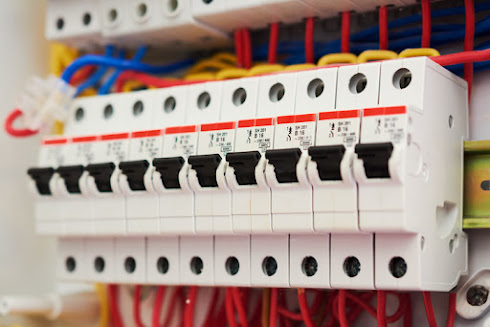HOW TO PROTECT AN ELECTRICAL SUBSTATION FROM WILDLIFE
Most electrical substations are designed for outdoor use. Configurations can vary, and although isolators provide adequate isolation distance for normal operating voltages, they do not have enough so that animals do not come into contact. For this reason, protecting an electrical substation from wild fauna is a very important task.
Animal intrusion can be a major problem with the potential to affect the reliability and continuity of an electrical system. The effects can range from gunshots to lengthy interruptions to equipment damage. In addition to this, environmental risks remain latent due to a possible oil spill caused by an electrical failure.
Standford Electrical Standford Electrical Standford Electrical Standford Electrical Standford Electrical Standford Electrical Standford Electrical Standford Electrical Standford Electrical Standford Electrical
Of course, the damage is not limited to the outdoors. Many plants use processes that are sensitive to interruptions, making them extremely expensive to restore. In addition, the proliferation of computers and other delicate electrical devices is also an added concern.
To evaluate the problem and its possible solutions, the following aspects should be investigated beforehand:
Equipment voltage.
Natural environment.
The way the animal enters the substation.
The reason why animals show up.
Barrier methods are available to keep them out.
Methods to repel them.
Insulation options.
Standford Electrical Standford Electrical Standford Electrical Standford Electrical Standford Electrical Standford Electrical Standford Electrical Standford Electrical Standford Electrical Standford Electrical
When equipment fails, it could take a while to discover that it was caused after an animal came into contact with the facility. So here are some ways to protect an electrical substation from wildlife:
Find the cause of the contact
It is necessary to identify the species that is causing the problem before determining a solution. Animals can enter a substation in a number of ways, so finding out how they sneaked out is important in designing the mitigation effort.
Squirrels, for example, often cause distribution failures because they tend to gnaw on what they find. On the other hand, to take care of the bird's equipment, it is necessary to cover the bushings and insulators with plastic.
Standford Electrical Standford Electrical Standford Electrical Standford Electrical Standford Electrical Standford Electrical Standford Electrical Standford Electrical Standford Electrical Standford Electrical
Fences, of course, will also keep any larger flightless animals at bay.
Small birds are usually attracted to covered places to make their nests and have a good view of the panorama to guard against predators. Larger ones also tend to perch on teams in search of their prey.
Mice enter a station when there is grass or in search of protection from other animals.
Snakes, being cold-blooded, enter a substation to warm up a bit or when they are looking for food.
It is difficult to predict which seasons will attract certain animals based on the environment, so this factor should not be decisive when designing a protection strategy.
Standford Electrical Standford Electrical Standford Electrical Standford Electrical Standford Electrical Standford Electrical Standford Electrical Standford Electrical Standford Electrical Standford Electrical
Know the available solutions
When a company sets out to choose the best approach to solving its wildlife problem, it will soon discover that there are many options available. Most are not totally passive, but the more they are, the more effective they will be.
Birds, for example, usually ignore noise generators, which only temporarily scare them away. The most powerful are only practical in remote areas.
Fake snakes and owls usually work at first, but will eventually stop being useful. Instead, they can be considered human-shaped inflatables that are activated by movement.
Train staff
As important as the mitigation effort is, people can undermine it with their actions and omissions; companies must train personnel for various protection tasks. For example, they need to be trained to monitor an area of the electric fence that has been momentarily disabled for repair.
Another challenge is keeping the bushings and insulator covers in good condition, which can be damaged or installed incorrectly.
Standford Electrical Standford Electrical Standford Electrical Standford Electrical Standford Electrical Standford Electrical Standford Electrical Standford Electrical Standford Electrical Standford Electrical
When a technician performs maintenance, he can leave them loose, hence the importance of knowing how to do his job correctly.
Consider the longevity of the chosen method
Due to differences in materials used and approaches to keeping animals away, the shelf life of these products varies significantly.
An electric fence, for example, can last up to 15 years, although damage caused by handling and UV rays reduces its ductility. Non-electric ones, on the other hand, can function properly for up to 40 years.
Noise generators can be effective for a month or until there is a complaint about the sound. Bushings and insulator covers may fall off one year after installation. Given this, there is no doubt that it is necessary to consider all the options and choose the one that represents the best cost/benefit.
Standford Electrical Standford Electrical Standford Electrical Standford Electrical Standford Electrical Standford Electrical Standford Electrical Standford Electrical Standford Electrical Standford Electrical
Measure the effectiveness of the solution
The percentage of improvement can be calculated years after the device or method in question was installed. Multiplying the years of use by the incidents involving animals before and after installation will result in the annual failure rate.
To determine the success of a method, it is recommended to only include specific failure types. For example, animal intrusions could not enter a fence's success measure; but those that were caused by human error can be considered.
While all methods have their pros and cons, companies can protect an electrical substation from wildlife with some of these. Concerns vary in each location, as it is necessary to consider the animals present and the voltage that prevails in the station. By connecting with other players in the industry, the company can learn from the mistakes and successes of others to make the best decision.






Comments
Post a Comment